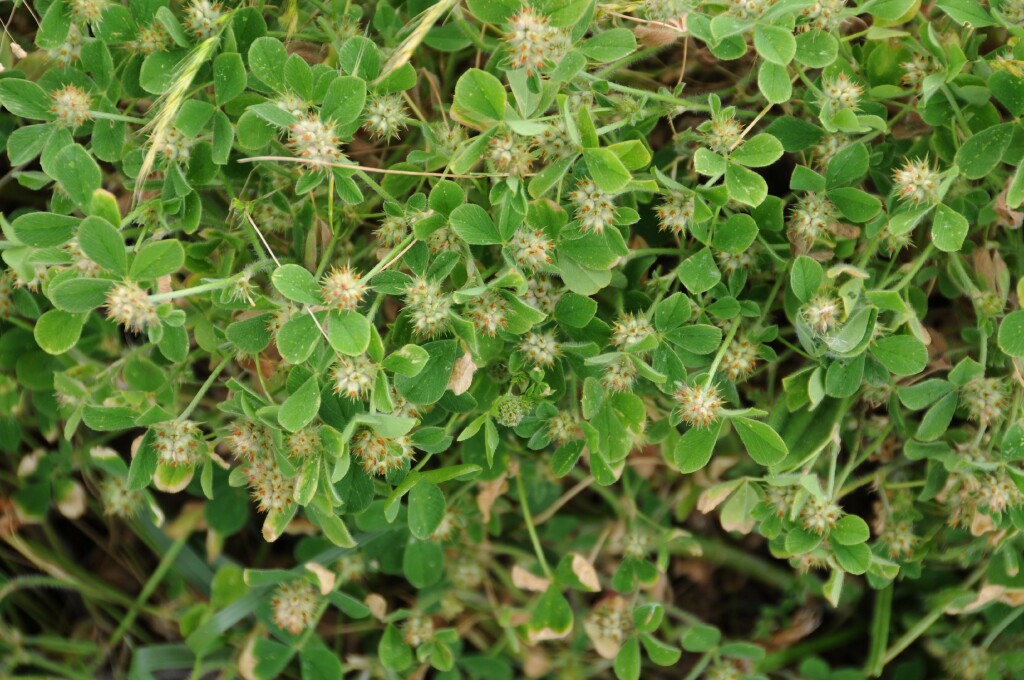Trifolium striatum
L. Knotted CloverErect, ascending or decumbent annual herb; stems 10–60 cm long, slender, simple or branched, sparsely to densely villous. Leaves palmately trifoliolate, short- to long-petiolate; leaflets obovate to obovate-oblong, 3–25 mm long, 2–13 mm wide, appressed-hairy on both surfaces, lateral veins mostly straight near margins, upper margins minutely dentate, minutely mucronate, obtuse to retuse at apex; stipules submembranous, appressed-hairy, green-veined, adnate to petioles for up to half their length. Inflorescence 20–40-flowered, ovoid to obloid, 6–20 mm long, 8–15 mm wide, axillary or terminal, single or paired, sessile or shortly pedunculate; flowers sessile. Calyx to c. 7 mm long, hairy, tube ellipsoidal, becoming globular in fruit, 10-veined, throat open, teeth equal to subequal, spiny, shorter than tube, erect or slightly spreading in fruit; corolla 5–7 mm long, pink, persistent. Pod obovoid, c. 2 mm long, membranous, included in calyx tube; seed 1, ovoid, c. 1.5 mm long, yellow or brown. Flowers mainly Oct.–Jan.
LoM, MuM, Wim, GleP, Brid, VVP, VRiv, MuF, GipP, OtP, WaP, Gold, CVU, GGr, DunT, NIS, EGL, EGU, WPro, HSF, HNF, Strz, VAlp. Also naturalised WA, SA, Qld, NSW. Native to Europe, the Middle East, western Asia, northern Africa. Occasional weed, mostly in higher rainfall areas of Victoria.
An extremely polymorphic species displaying variation in size, habit and the relative lengths of the petals and calyx teeth.
Jeanes, J.A. (1996). Fabaceae. In: Walsh, N.G.; Entwisle, T.J., Flora of Victoria Vol. 3, Dicotyledons Winteraceae to Myrtaceae, pp. 663–829. Inkata Press, Melbourne.
 Spinning
Spinning



